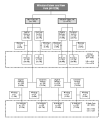Severity of acute pain after childbirth, but not type of delivery, predicts persistent pain and postpartum depression
- PMID: 18818022
- PMCID: PMC2605246
- DOI: 10.1016/j.pain.2008.07.011
Severity of acute pain after childbirth, but not type of delivery, predicts persistent pain and postpartum depression
Abstract
Cesarean delivery rates continue to increase, and surgery is associated with chronic pain, often co-existing with depression. Also, acute pain in the days after surgery is a strong predictor of chronic pain. Here we tested if mode of delivery or acute pain played a role in persistent pain and depression after childbirth. In this multicenter, prospective, longitudinal cohort study, 1288 women hospitalized for cesarean or vaginal delivery were enrolled. Data were obtained from patient interviews and medical record review within 36 h postpartum, then via telephone interviews 8 weeks later to assess persistent pain and postpartum depressive symptoms. The impact of delivery mode on acute postpartum pain, persistent pain and depressive symptoms and their interrelationships was assessed using regression analysis with propensity adjustment. The prevalence of severe acute pain within 36 h postpartum was 10.9%, while persistent pain and depression at 8 weeks postpartum were 9.8% and 11.2%, respectively. Severity of acute postpartum pain, but not mode of delivery, was independently related to the risk of persistent postpartum pain and depression. Women with severe acute postpartum pain had a 2.5-fold increased risk of persistent pain and a 3.0-fold increased risk of postpartum depression compared to those with mild postpartum pain. In summary, cesarean delivery does not increase the risk of persistent pain and postpartum depression. In contrast, the severity of the acute pain response to childbirth predicts persistent morbidity, suggesting the need to more carefully address pain treatment in the days following childbirth.
Figures



References
-
- FDA Public Health Advisory: Use of Codeine By Some Breastfeeding Mothers May Lead To Life-Threatening Side Effects In Nursing Babies. Accessed at http://www.fda.gov/CDER/Drug/advisory/codeine.htm on 1-15-2008.
-
- Apfelbaum JL, Chen C, Mehta SS, Gan TJ. Postoperative pain experience: Results from a national survey suggest postoperative pain continues to be undermanaged. Anesth Analg. 2003;97:534–540. - PubMed
-
- Barsky AJ, Wyshak G, Klerman GL. The somatosensory amplification scale and its relationship to hypochondriasis. J Psychiatr Res. 1990;24:323–334. - PubMed
-
- Brandsborg B, Nikolajsen L, Hansen CT, Kehlet H, Jensen TS. Risk factors for chronic pain after hysterectomy: a nationwide questionnaire and database study. Anesthesiology. 2007;106:1003–1012. - PubMed
-
- Brown S, Lumley J. Maternal health after childbirth: results of an Australian population based survey. Br J Obstet Gynaecol. 1998;105:156–161. - PubMed
Publication types
MeSH terms
Grants and funding
LinkOut - more resources
Full Text Sources
Other Literature Sources
Medical

